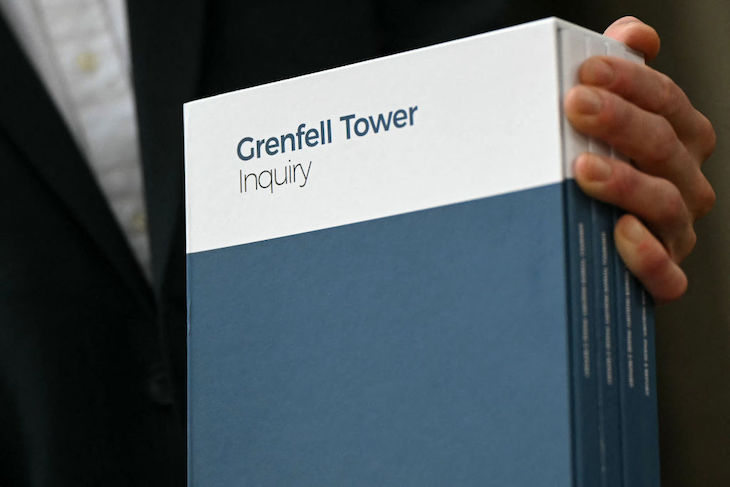Predictably enough, and not unreasonably, the 1700-page final report into the Grenfell disaster apportions the bulk of the blame with the companies who manufactured and sold the flammable cladding and insulation.
The report doesn’t spare the London Fire Brigade
What has emerged from this inquiry is astonishing: you hardly need a degree in engineering to work out that it is not a good idea to wrap a tower block in combustible material. That manufacturers seem to have ‘deliberately concealed’ the risk that their products posed is something which is almost inevitably going to be picked over further in the courts. Why it has taken seven years to produce this report – thereby holding up possible criminal cases – is itself a scandal. As ever with our drawn-out public inquiries many of the guilty parties will no longer be around to face the music, at least not in the roles they held.
The report doesn’t spare, either, the London Fire Brigade, which is accused of a ‘chronic lack of leadership’. In spite of the heroism of individual firefighters, the organisation itself was found to have lacked the imagination to see that such a fire could occur – not that it should have been put in the position of having to fight a fire which should have been totally avoidable. The advice given to residents to stay in their flats must be one of the most lethal instructions to be handed out by a public authority in modern times. Many more people would likely have survived had they been instructed to leave.
But the report into the 2017 fire in which 72 people died does lack some overall context. Tower blocks were built in the 1960s and 70s on the principle that there must be no combustible material outside the flats – either in public areas or on the outside of the building. In some blocks, residents have even been asked to remove doormats. It is only by making fire impossible in public areas that tower blocks with single staircases could be made reasonably safe. But come the programme of retrofitting old buildings to modern insulation standards all that seemingly went out of the window. Reducing emissions became the over-riding focus. Something similar is happening with old houses, where solid wall insulation is being pushed at homeowners with little regard to damp issues. The insulation and cladding industry is, of course, the great beneficiary of all this retrofitting.
It is possible to insulate buildings without increasing fire risk, but when it comes to tower blocks it is perhaps best if these buildings are allowed to reach the end of their lives – not long off – without being clad with anything. One remarkable thing about Grenfell was the sheer cost of the refurbishment, which worked out at over £70,000 per flat. Tempting though it may be to think there are economies of scale in housing people in large block of flats rather than in low-rise houses, this does not seem to be the case. Trying to revive these wretched buildings is just throwing good money after bad.
There are some issues which this inquiry has not addressed. Thousands of blameless homeowners have been forced to pay to fix defective work by the developers of their properties; they have also been forced to cough up for ‘waking watches’ in blocks of flats deemed to be too unsafe to have everyone asleep at night. They have been unable to sell their properties while these issues have been resolved.
The Grenfell tragedy has also been ruthlessly exploited by rapacious freeholders out to maximise the financial return from their leaseholders. One of the legacies of Grenfell ought to be the end of the leasehold system, with all buildings converted to commonhold (i.e. the owners of the individual flats jointly own the building as a whole). This is a system which works perfectly well in virtually every other country in the world. The Tories flirted with, but ultimately were too pathetic to carry it out, compromised as they are by vested interests. The new government could curry favour with millions of flat-owners by completing the job.








Comments